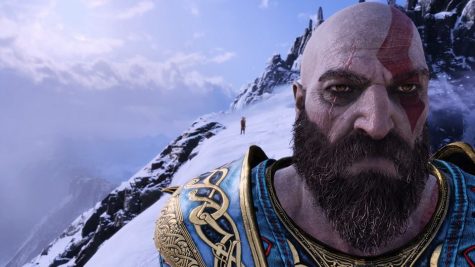“The Fall” Franchise Fails to Live up to Expectations in Sequel
Developed by Over the Moon, The Fall Part 2: Unbound is an adventure video game that continues the story from The Fall and features the previous game’s main character, an Autonomous Robotic Interface Device — an artificial intelligence being with a combat suit, who calls itself ARID. In this game, recently released on Feb. 13, you awake as ARID, with no ability to move your body, and to a hostile user attempting to deactivate you. The game tasks you with figuring out who is attacking you and how to save yourself. You do this by exploring a virtual space, hopping between other robots with their own sets of rules, and occasionally shooting dark tentacle-like bits that spew out from different points in the virtual world.
This sequel establishes that ARID has a new operating condition after abandoning all the ones it had in the last game: survival. That message is repeated constantly in the game until the ending, where in the name of a twist in the tale, ARID must re-evaluate all that it has done and go back and help those it has harmed. This twist leads to the introduction of a new mechanic which is a fascinating blend between technology and message. You gain access to all the AIs that you had harmed and now must save them, using the perspectives of each. This idea, a unit composed of individuals, isn’t revolutionary, but its presentation and execution definitely is.
Though ARID’s journeys toward self-identity and self-preservation are intriguing, the game’s combat is boring and more of a chore. Only one encounter with ARID’s adversaries is truly difficult, and the rest feel like a complete waste of time. However, you don’t spend most of your time in combat. Instead you deal with the other robots in ARID’s world, all of whom have a variety of rules, self-imposed or given by their creators. Gamers must slowly pervert the rules of other robots through puzzles that range from incredibly simple to “I need a guide to solve this.” The Fall continues to come up short in terms of puzzle design. The previous game used these puzzles, which at times were unduly difficult, to do world building and explore questions about the nature of artificial consciousness. They were brief but used each interaction to push the storyline of the game forward until coming to a satisfying and dark conclusion. This game focuses less on posing meta-questions to stimulate the player, instead pushing them to accept the answers the game provides, adding an aspect of preachiness to the tedium.
The game tends to worry more about being edgy and presenting a morally compromised protagonist and less about establishing any sort of explanation for the characters’ motives or behavior. Every time I took action, pushing the innocent AIs down paths of self-destruction, I hated my character. I didn’t want them to succeed from the start. It wasn’t a slow build up of me questioning the worthiness of my cause, but an immediate realization that I didn’t agree with anything I was making ARID do.
I found this narrative structure disappointing, which was surprising given how strong the last game was in terms of pace, tone, and nuance. The predecessor established stakes, provided interesting situations, and slowly introduced scenarios that became less and less comfortable to you as the player. The sequel ignores that last step entirely and suffers for it.
The first chapter of The Fall was focused and tight. It was ARID falling onto a planet that seemed to be abandoned, and attempting to resuscitate the pilot inside of its suit, a combat suit. There are three rules that ARID, as an AI, must follow. The game then spends its course slowly showing that you can and must uphold the most important rule, until the final twist shows how everything you’ve done has been without purpose. Its sequel is about watching ARID run through the game rather than creating a connection with you as the player.
One example of excellent gameplay in The Fall Part 2 is when ARID comes upon one of the AIs had been assimilated into a hive mind and you must restore its individuality. To do this, you cannot look at the world through its perspective, because it cannot see rationally. Instead, you use the perspective of the other artificial intelligences to make this robot differentiate between itself and others. As a puzzle, it is slow, but the underlying mechanics were fun and made me think not only in terms of the game, but also in the wider scope of the world. It’s a shame that this comes at the end of the game, with maybe an hour left of play time in what is around a three to four hour journey.
Overall, The Fall is a disappointment. It was a game I had been looking forward to since I finished the first chapter nearly four years ago. Instead of slowly pushing the themes of its predecessor, it takes them and force feeds them to you like a stubborn toddler who won’t eat their vegetables. If it stood alone, it might be tolerable, having at least some interesting mechanics in the latter half of the game. As a sequel, I recommend fans just go back and play the first game, and lament the fact that a game with so much potential is barely okay, let alone great.






